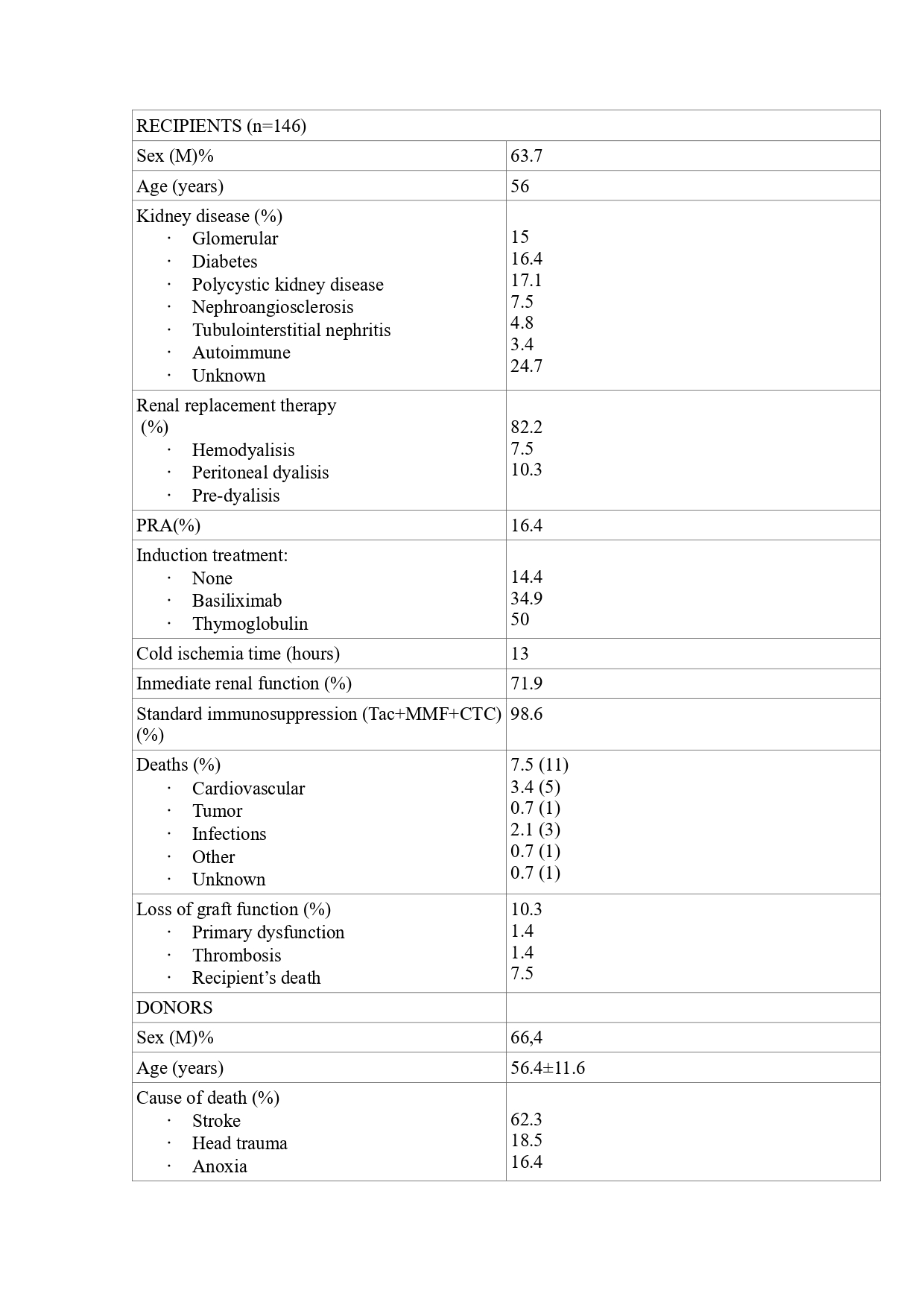Serum Klotho and FGF-23 levels and their variability within two years after kidney transplantation
Teresa Vazquez Sanchez1, M. Dolores Sanchez-Niño2, Pedro Ruiz Esteban1, Veronica Lopez1, Alberto Ortiz2, Abelardo Caballero3, Myriam León4, Domingo Hernández1.
1Nephrology, Regional University Hospital (IBIMA), REDinREN (RD16/0009/0006), Malaga (España), Málaga, Spain; 2Nephrology, Instituto de Investigación Sanitaria de la Fundación Jiménez Díaz, Universidad Autónoma de Madrid., Madrid, Spain; 3Immunology, Regional University Hospital (IBIMA), REDinREN (RD16/0009/0006), Malaga (España), Málaga, Spain; 4Pathology, Regional University Hospital (IBIMA), REDinREN (RD16/0009/0006), Malaga (España), Málaga, Spain
Purpose: Klotho is a protein produced in renal tubular cells with nephroprotective actions which acts as a co-receptor for phosphaturic factor FGF-23. The natural history of the production and expression of post-transplant klotho and FGF-23 is still unknown. Our aim is to know the evolution of these molecules during two years after kidney transplant (KT).
Methods: Klotho and FGF-23 levels were determined in 42 patients at baseline, third, twelve and twenty-fourth month after kidney transplant (KT), measured by ELISA. The glomerular filtration rate (GFR) of the kidney graft was performed by indirect methods (formula:MDRa and CKD-EPI) at each study visit.
Results: A total of 146 kidney transplant patients were included in the study and 42 patients have completed the follow-up. The clinical and demographic characteristics of donor and recipients are shown in Table 1. Klotho levels at the third month decreased significantly in both groups (basal 452,69±236,85 vs third month 408,83± 223,34;p=0.01) rising in month 12 (523.9±279.6), remaining at these values in the second year after KT (511.1±308.3), even higher than before KT. Similarly, when we analyzed the pre-transplant FGF23 in 56 patients, we observed a reduction trend at the third month, which was maintained until 24 months (baseline 783 vs 193.88 at third month, 158.32 at month 12 and 192.10 in month 24;p=0.066).

Conclusions: We describe a decreasement in Klotho levels which increase after one year post KT, which could be justified by the “stunned” of the renal tubule after KT, caused by ischemia-reperfusion time, tubular necrosis, treatment with calcineurin inhibitors, which improves and rises to levels even higher than those prior to KT. More prospective studies are needed to confirm these hypotheses.

right-click to download
